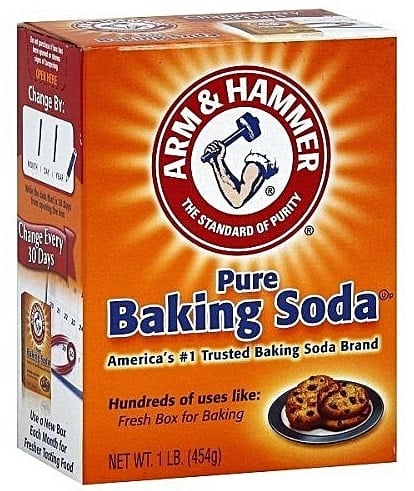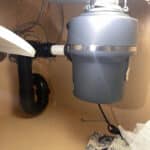Having a dishwasher can be a real lifesaver. You simply load your dirty dishes, and within a short time, they emerge sparkling clean. However, it's not always that straightforward. Since your dishwasher regularly tackles dirt and uses cleaning agents, it requires proper and consistent maintenance.
Neglecting this can lead to a clogged dishwasher, rendering it ineffective for cleaning your dishes. A clogged dishwasher can be a significant inconvenience, disrupting your usual cleaning routine
So the best step here is to prevent your dishwasher from clogging. Then you’ll never have to bother yourself about unclogging a clogged dishwasher. Of course, prevention is better than cure.
By using these simple tips, you can keep your machine working in top condition and getting your dishes clean daily. Let’s consider 7 ways you can keep your dishwasher from clogging.
1. Clear your plates of food particles
In most cases, you find that what clogs your dishwasher are food particles from your plates. Many people make a mistake of just packing their plates into the dishwasher without first checking for sticky food on plates or even some grains of food.
When you pack plates into your dishwasher with these particles, it becomes more difficult for the dishwasher to wash your plates properly.
Furthermore, those food particles can end up clogging various parts of your machine.
Overall, this would lead to unnecessary stress. You can prevent this by removing food particles from your dishes before loading them into the dishwasher.
This would ensure that your dishwasher only needs to clean the oil and other dirt that pose little threat of clogging.
2. Wash dishes regularly
One of the ways to keep your dishwasher from clogging is to use it. Sounds simple right? Using your machine regularly will ensure there’s a flow of water and detergent in and out of the machine to flush dirt out.
Irregular use means dirt can stick around in your machine for a long time. This can happen when you travel or go on a vacation for a while. Before going on the vacation, it’s important that you clean your dishwasher.
This way, when you come back from your vacation, you won’t find dirt that has settled into your machine.
3. Run a hot water cycle
Running hot water through your dishwasher will help you to remove dirt easier as hot water is more effective with oily dirt than cold water will be. Doing this will also ensure that you have cleaner dishes after washing.
You can set the thermostat of your water heater to 120°F(50°C) to get the water warm enough but not too hot. You should do this a few times in a week to help remove all the mineral buildups.
4. Wash the exterior parts and edges
You need to take care of your exterior parts as they can affect the internal workings of your machine.
You need to clean the door and edges of the machine. In many cases, you can have the front part stained with water and fingerprints.
You can use a cleaning rag dipped in hot soapy water to wipe the surface clean. After doing this, take a clean cloth to wipe the surface dry.
While using your machine, you need to check that the door is properly closed.
If your dishwasher door opens during use, then this can lead to the escape of water onto the floor, including dirt from your plates.
When you notice an open door, you need to check your manufacturer’s manual to see how you can tighten your dishwasher’s door.
This is because dishwashers differ in their door mechanisms. Some doors have spring mechanisms while some have adjustable latch plate at the top frame of the machine.
Whenever you see water on the floor, another reason could be that your machine is unleveled. This could happen if your machine wasn’t installed properly. If your machine tilts, it could cause water and dirt to pool and leak out.
Pooled water in your machine can lead to dirt settling in some areas and over time clogging your machine. In cases when your machine is unleveled, you can just adjust the front or back feet to ensure that water is centered.
To do this, you can check the owner's manual to get more details about how to access your machine’s feet. If you’re unable to adjust it yourself or the feet has been damaged, you may need to contact a plumber or get wooden shims.
5. Clear your dishwasher’s filter and other parts
Some of your dishwasher parts tend to gather dirt over a long period of use. This is why you should check them regularly and clean them before they start affecting your machine’s functions.
One of these important parts is the filter. The filter, as the name suggests, helps to filter water that goes into the drain. It prevents food particles and other materials from going into your drain.
Over time, your machine’s filter will have dirt stuck within the spaces. If you don’t clean the filter regularly, it can accumulate to the point that it clogs your machine.
After cleaning your filter, another part you need to clean is the whole float assembly. You need to first remove the dish racks to have space to work with. After that, you can remove your float assembly.
How you remove it will depend on your machine’s manufacturer. If you’ve never done this, it’s important to check your owner’s manual before you proceed.
After removing your float assembly, you should clean all the parts of dirt that may be stuck within.
Another thing you may notice while cleaning your float assembly and your filter is that dirt may still stick to some of these parts. One tool you can use to remove this dirt is your air blower.
With this tool, you can remove dirt stuck in your filter. All you have to do is run your blower through places where you find dirt.
The same thing applies to parts of your float assembly. You can point your blower at different openings in these parts to force the dirt out of the part.
With this, you may not remove all the dirt but it’ll be far better than without the blower. After doing this, you should remove dirt in the area around the float assembly in the dishwasher. You can then replace the float assembly. You should check other removable parts and follow the same process.
Another way to help you reach these hidden parts is to use an old toothbrush as it can reach these parts including parts of your machine you can’t remove.
After doing that, another part to check is your pipes. In some cases, dirt can settle in your pipe and clog the pipe which will make the flow of water from your dishwasher to the sink difficult.
When you inspect the pipe, you can easily clean the waste left in your pipe. You should also check the dishwasher pump.
This pump contains two impellers. The one at the top helps to pump water into the machine while the one below helps to pump water out of your machine into the drain.
Over time, gunk may settle in the impellers and affect your dishwasher’s functions as water finds it difficult to flow.
Check these parts and clean the gunk. You must ensure you turn off your dishwasher before doing all these. You should also unplug it from the wall just to ensure it's totally safe.
6. Apply vinegar to it
Vinegar works as an antibacterial agent and can help you to remove odors that may build up over time. You can pour two cups of vinegar in a bowl and place it at the center of the bottom rack of your dishwasher.
You can then run a cycle on your machine without detergent. This will help remove bacteria and troubling odors.
You can also put lemonade Kool-Aid into your detergent cup and run the machine empty. The citric acid in this drink can help to remove stains in your dishwasher.
7. Improve the scent with baking soda
Vinegar helps you to remove odors in your dishwasher. But you can give your machine a better smell by applying baking soda to it.
To achieve this, sprinkle one cup of baking soda into the bottom of your dishwasher. You can leave it overnight to allow the soda soak in the dishwasher. This will kill bacteria lying in your machine and also give it a new smell.
In the morning, you can run your dishwasher on an empty cycle to remove the baking soda.
Conclusion
If you use your dishwasher regularly, one of the issues you should always try to avoid is clogging up your machine. Because it can waste your time and make your chores more difficult.
You can always prevent this by ensuring that you use your machine regularly to ensure that wastes are removed.
You should also follow the ways described in this post to remove dirt in your machine before they clog it up.
And lastly, you can add cleaning substances to remove bacteria and improve its smell. Then, you won’t have to worry about your dishwasher giving you sudden problems.







